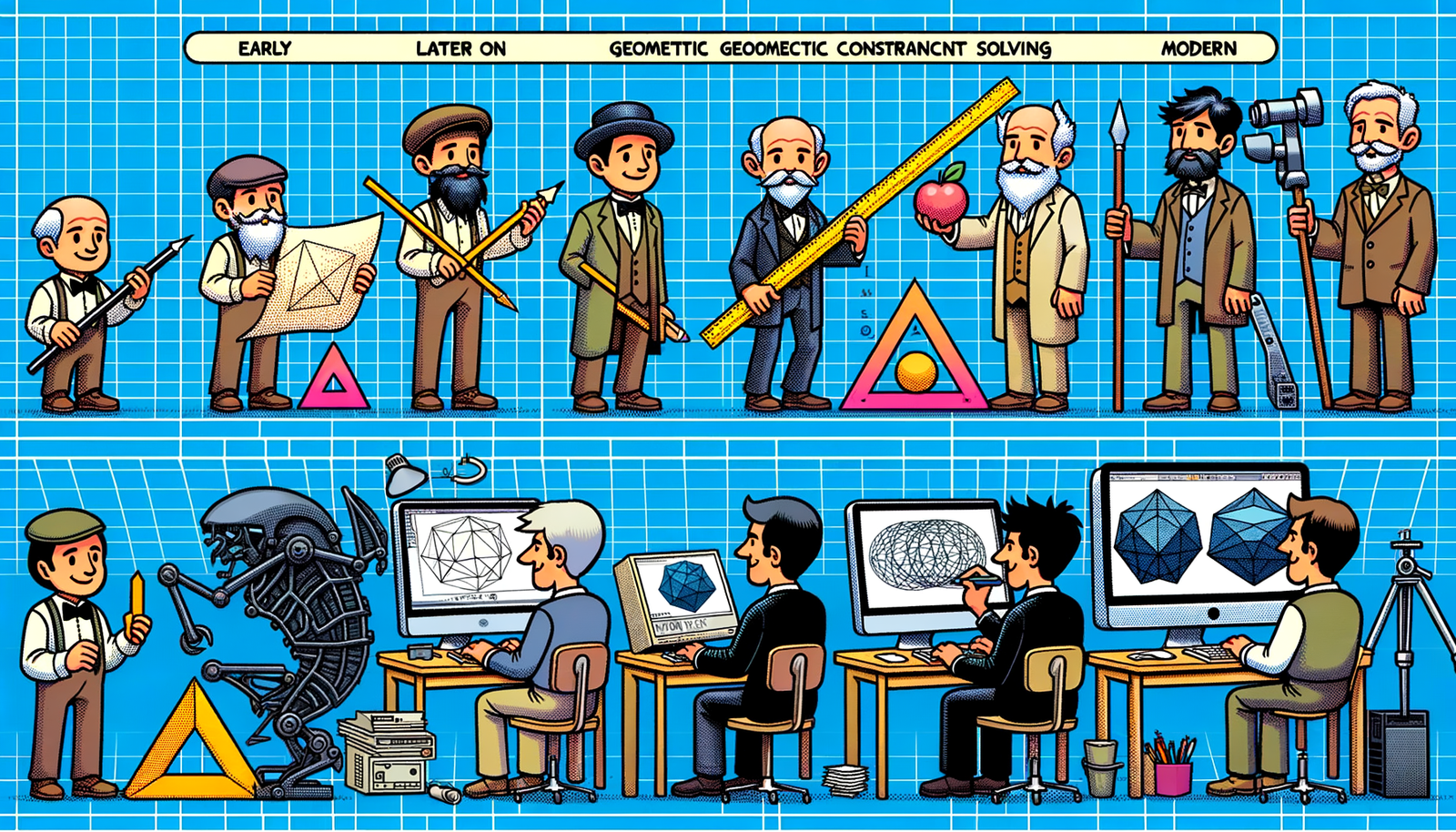Your Cart is Empty
Customer Testimonials
-
"Great customer service. The folks at Novedge were super helpful in navigating a somewhat complicated order including software upgrades and serial numbers in various stages of inactivity. They were friendly and helpful throughout the process.."
Ruben Ruckmark
"Quick & very helpful. We have been using Novedge for years and are very happy with their quick service when we need to make a purchase and excellent support resolving any issues."
Will Woodson
"Scott is the best. He reminds me about subscriptions dates, guides me in the correct direction for updates. He always responds promptly to me. He is literally the reason I continue to work with Novedge and will do so in the future."
Edward Mchugh
"Calvin Lok is “the man”. After my purchase of Sketchup 2021, he called me and provided step-by-step instructions to ease me through difficulties I was having with the setup of my new software."
Mike Borzage
Design Software History: Pioneering the Future: The Evolution and Impact of Design Software in Entertainment
June 21, 2024 5 min read


I. Introduction
The journey of design software in the entertainment industry is a story of transformation and technological marvel. From the rudimentary methods of early design to the sophisticated software that empowers today's entertainment giants, the evolution has been nothing short of extraordinary. Before the advent of design software, hand-drawn sketches, physical models, and manual calculations were the norm. These manual methods were not only time-consuming but also limited in precision and scope. As we delve into this topic, we will explore the role and significance of design software in modern entertainment, a field where creativity meets cutting-edge technology.
This article aims to provide a comprehensive overview of key milestones, technologies, and influential companies and individuals that have shaped the landscape of design software. From pioneering technologies and early innovators to the current integration of advanced systems and future trends, we will cover the most impactful developments in this fascinating field.
II. The Early Days: Pioneering Technologies and Innovators
Early Computer Graphics and Animation
The origins of computer graphics can be traced back to the early 1960s, a period marked by groundbreaking research and experimentation. One of the most significant milestones was the development of **Ivan Sutherland’s Sketchpad** in 1963 at MIT. Sketchpad was the first program to utilize a graphical user interface, allowing designers to interact with the computer through a light pen. This innovation laid the groundwork for future design software by demonstrating the potential of computers in visual design.
MIT and other early research labs played a crucial role in advancing computer graphics. Researchers at these institutions were instrumental in developing the algorithms and hardware that would form the backbone of modern design software. Their work in transforming mathematical theories into practical applications paved the way for the digital revolution in design.
Foundational Companies and Products
The late 20th century saw the emergence of several companies that would become cornerstones of the design software industry. Among these, **Autodesk** stands out for its introduction of AutoCAD in 1982. AutoCAD revolutionized the field of computer-aided design (CAD) by providing a powerful yet accessible tool for engineers, architects, and designers. It enabled precise 2D and 3D modeling, significantly improving efficiency and accuracy.
Another monumental contribution came from **Pixar** with the development of RenderMan. RenderMan, introduced in the early 1990s, became the industry standard for rendering high-quality visual effects. Its ability to produce photorealistic images made it indispensable for animation studios and special effects companies, influencing countless films and projects.
Key Individuals
The history of design software is also the story of visionary individuals whose contributions have been pivotal. **Ivan Sutherland** and **David Evans** are two such figures. Sutherland, as mentioned earlier, was the creator of Sketchpad. David Evans co-founded the computer science department at the University of Utah, a hub for pioneering research in computer graphics.
**John Walker**, one of the founders of Autodesk, played a crucial role in the development and popularization of AutoCAD. His leadership and vision helped Autodesk become a leader in the CAD industry, setting the stage for the widespread adoption of digital design tools.
III. Evolution and Impact of Core Technologies
Geometric and Solid Modeling
The development of advanced geometric and solid modeling techniques has been fundamental to the progress of design software. One of the most critical advancements in this area was the creation of **Non-Uniform Rational B-Splines (NURBS)**. NURBS allowed for the precise representation of complex curves and surfaces, which was particularly valuable in animation and industrial design.
The emergence of solid modeling kernels like **ACIS** and **Parasolid** further enhanced the capabilities of design software. These kernels provided robust frameworks for creating and manipulating 3D models, making them indispensable tools for CAD applications. Their development marked a significant step forward in the accuracy and functionality of 3D modeling.
Rendering and Visualization
The role of rendering technologies in design software cannot be overstated. **OpenGL**, introduced in the early 1990s, was a critical development in real-time rendering. This open standard allowed for the creation of interactive, high-performance graphics across different platforms, facilitating the development of immersive virtual environments.
**Ray tracing** has also had a profound impact on visual effects. By simulating the behavior of light, ray tracing can produce highly realistic images, making it a preferred technique for visualizing complex scenes. Its application in both film and video games has set new standards for visual fidelity.
Simulation and Special Effects
Simulation technologies have been equally transformative. **Finite element analysis (FEA)**, for instance, has enabled the creation of more realistic effects by allowing designers to simulate physical phenomena such as stress, heat, and fluid dynamics. This capability is particularly valuable in engineering and special effects for movies.
Innovations in dynamics and particle systems have also significantly enhanced visual storytelling. Techniques for simulating particles, fluids, and other dynamic elements have allowed for more complex and engaging visual effects in movies and games.
IV. Modern Era: Integration and Future Trends
Cross-Industry Integration
One of the most notable trends in recent years has been the cross-industry integration of design software. **Game engines** like **Unreal Engine** and **Unity** have found applications beyond gaming, influencing film and TV production. These engines provide powerful tools for creating realistic environments and special effects, making them valuable assets in the entertainment industry.
The use of **virtual and augmented reality** (VR and AR) in set design and pre-visualization has also gained traction. These technologies offer immersive experiences that allow designers and directors to visualize scenes before they are filmed, improving planning and execution.
Emerging Technologies
Emerging technologies such as **artificial intelligence (AI)** and **machine learning** are beginning to automate various design tasks. AI can assist in generating design alternatives, optimizing workflows, and even predicting trends, thereby enhancing creativity and efficiency.
**Cloud computing** has revolutionized collaborative design efforts. By providing scalable resources and facilitating real-time collaboration, cloud platforms have made it easier for teams to work together on complex projects regardless of their physical location.
Future Outlook
Looking ahead, the next decade promises exciting developments in entertainment design software. **Quantum computing** could potentially transform computational capabilities, enabling the simulation and rendering of even more complex scenes and effects. Additionally, **smart technologies** are expected to become more integrated, providing designers with intuitive tools that adapt to their needs.
In conclusion, the history of design software is a testament to the incredible advancements in technology and creativity. From the early days of computer graphics to the modern era of AI and cloud computing, each milestone has brought us closer to realizing the full potential of digital design. The future holds even greater promise, with innovations that will continue to push the boundaries of what is possible in entertainment design.
Also in Design News

Bluebeam Tip: Maximize PDF Security and Efficiency with Bluebeam Revu's Flatten Tool
December 02, 2024 1 min read
Read More
Design Software History: Evolution and Impact of Geometric Constraint Solving in CAD History
December 02, 2024 2 min read
Read More
Rhino 3D Tip: Enhancing Scale Modeling Accuracy in Rhino 3D: Essential Tips for Designers and Engineers
December 02, 2024 2 min read
Read MoreSubscribe
Sign up to get the latest on sales, new releases and more …


